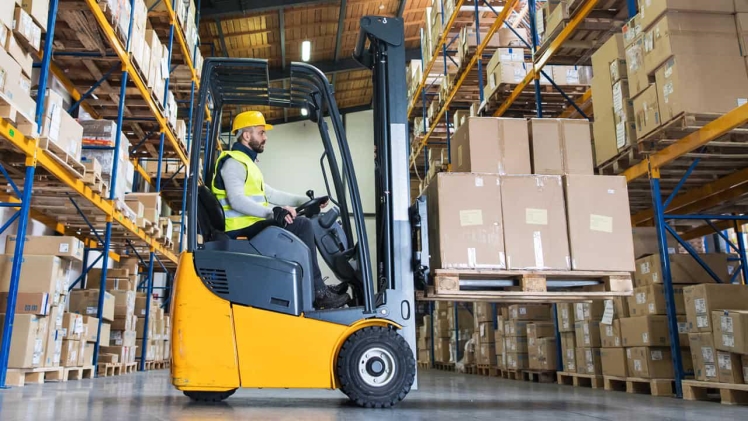Forklifts are a common feature in warehouses and other industrial sites where heavy lifting is necessary. These machines are powerful. They enable workers to lift and transport heavy and bulky items with ease and precision. However, like any other heavy and powerful machine, there is great risk involved in operating forklifts. Forklifts are responsible for tens of thousands of injuries and many fatalities in industrial settings every year. Many of these accidents could have been avoided by being more mindful of safe practices while operating these machines. Below, we discuss some tips for forklift safety.
1. Get your operator’s license
Many accidents that involve forklifts are due to poor operator training. Many organizations take forklift operator training for granted. However, lack of training often results in errors or negligence by the operator. These in turn result in an accident.
It is important for employers to ensure that those assigned the task of operating forklifts within their organization are trained and licensed. Employers should also do this for contractors when they choose to hire forklifts. They should have completed a relevant course that is accredited by a Registered Training Organization. Attending an accredited course is about much more than learning about how to operate a forklift properly. It is also about learning about safety regulations that you should adhere to while operating the forklift.
2. Wear safety gear within the workplace
Proper safety gear must be worn in the workplace to ensure the safety of all workers including forklift operators. It is important for forklift operators to wear safety gear before getting on the forklift. This typically includes safety shoes, a hard hat, and high visibility jacket. It is also important for the forklift operator to be careful to avoid wearing loose-fitting garments. These can get caught in the forklift and cause an accident.
It is also crucial for all those working within the space to wear safety gear. Forklifts are often operated within busy industrial settings. Wearing high visibility jackets and other safety gear will help to prevent accidents.
3. Inspect the forklift daily
Like any other heavy equipment, forklifts must be cared for and maintained in order to ensure safe and efficient operation. Inspecting the forklift daily is an important part of its maintenance. The forklift should be inspected by the shift supervisor when the shift changes. Any problems or defects identified should be identified and logged clearly. These problems should be attended to as soon as possible to avoid issues that could result in an accident.
Some checks to include in your daily inspection include:
- Inspecting tire and fluid levels (this includes hydraulic, brake, fuel, coolant, and engine fluid levels)
- Checking for damage to the overhead guard
- Checking for damage to the mast
- Testing the controls for efficiency. This includes brakes, steering wheel, lights, and horn
- Checking the radiator for leaks
- Checking for leaks of oil and water from any other part of the forklift
- Inspecting the forks to ensure that they are in good condition. Check to see whether there are any distortions, cracking, or other signs of damage
- Checking for any other potential hazards.
4. Drive the forklift at a safe speed
Just as with other vehicles, forklifts can be difficult to control if they are driven at high speeds. Workplaces should therefore implement speed limits and forklift operators should adhere to these speed limits. Operators should be careful when turning, stopping, or changing direction. If you move too quickly take turns too sharply, stop suddenly or change direction too quickly, you may cause an accident. The forklift may turn over.
It is important for operators to remember to stay calm and avoid trying to jump out of the forklift when it begins to dip. You should instead grip the steering wheel more tightly and brace your feet. This will help to prevent serious injuries.
5. Pay attention to the stability of the forklift
It is important to pay attention to the forklift’s stability when operating it. Instability of the forklift can result in it tipping over. Ensure that you sit in a comfortable position within easy reach of the controls. Looking for bulldozers? Check out Boom and Bucket on this website.
You should understand the capacity of your forklift and only carry loads that your forklift can bear. It is important to place loads carefully and check that they are well balanced before moving them. When traveling with a load, keep the forks as low as possible and tilt the load backward. This will increase the stability of the forklift.
Wrapping it Up
Forklifts can help to improve efficiency in the workplace by lifting heavy loads. However, operating these machines presents various risks. It is important to take forklift safety seriously to protect workers and avoid accidents within the workplace. The tips above are a great place to start.

